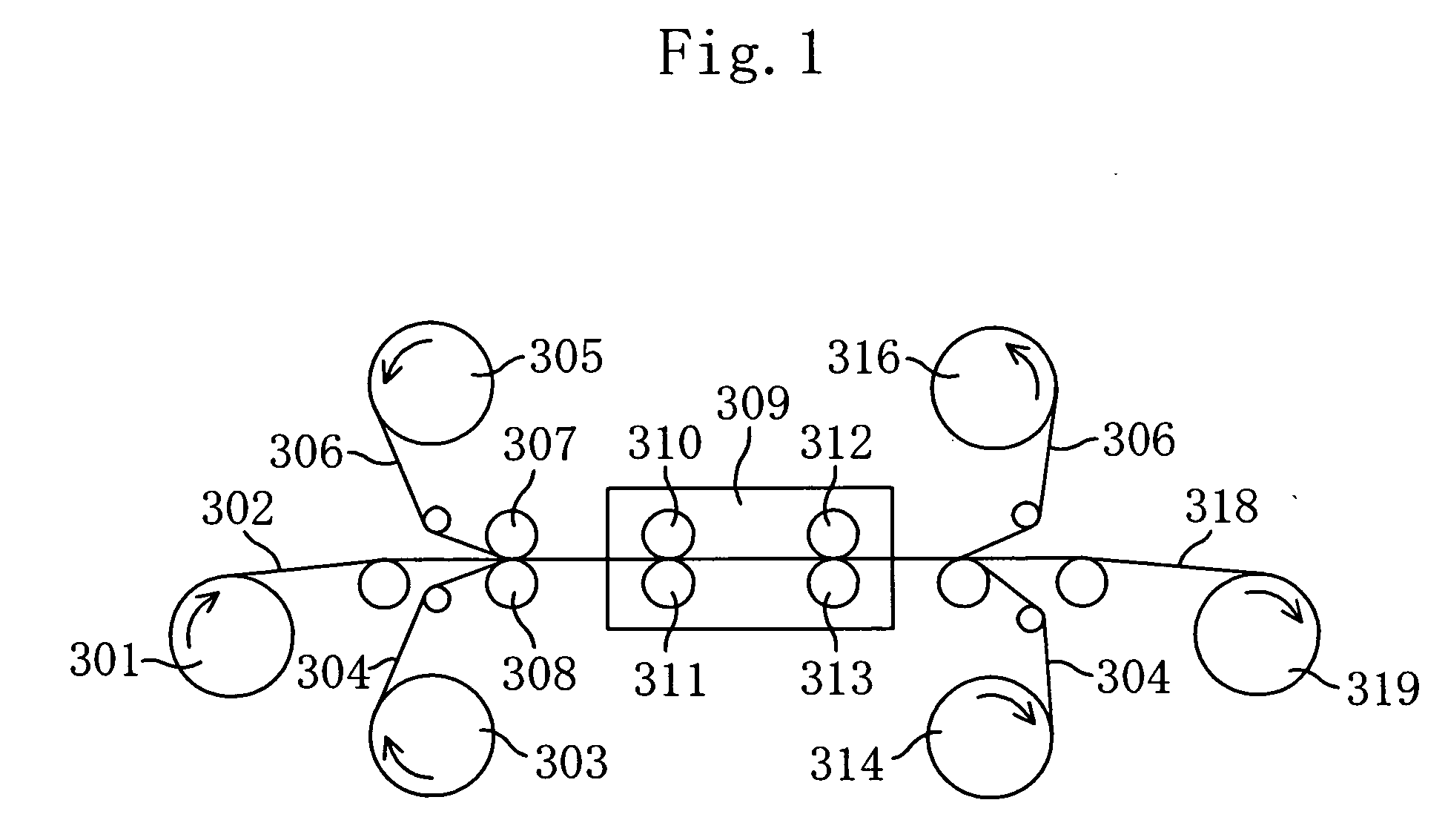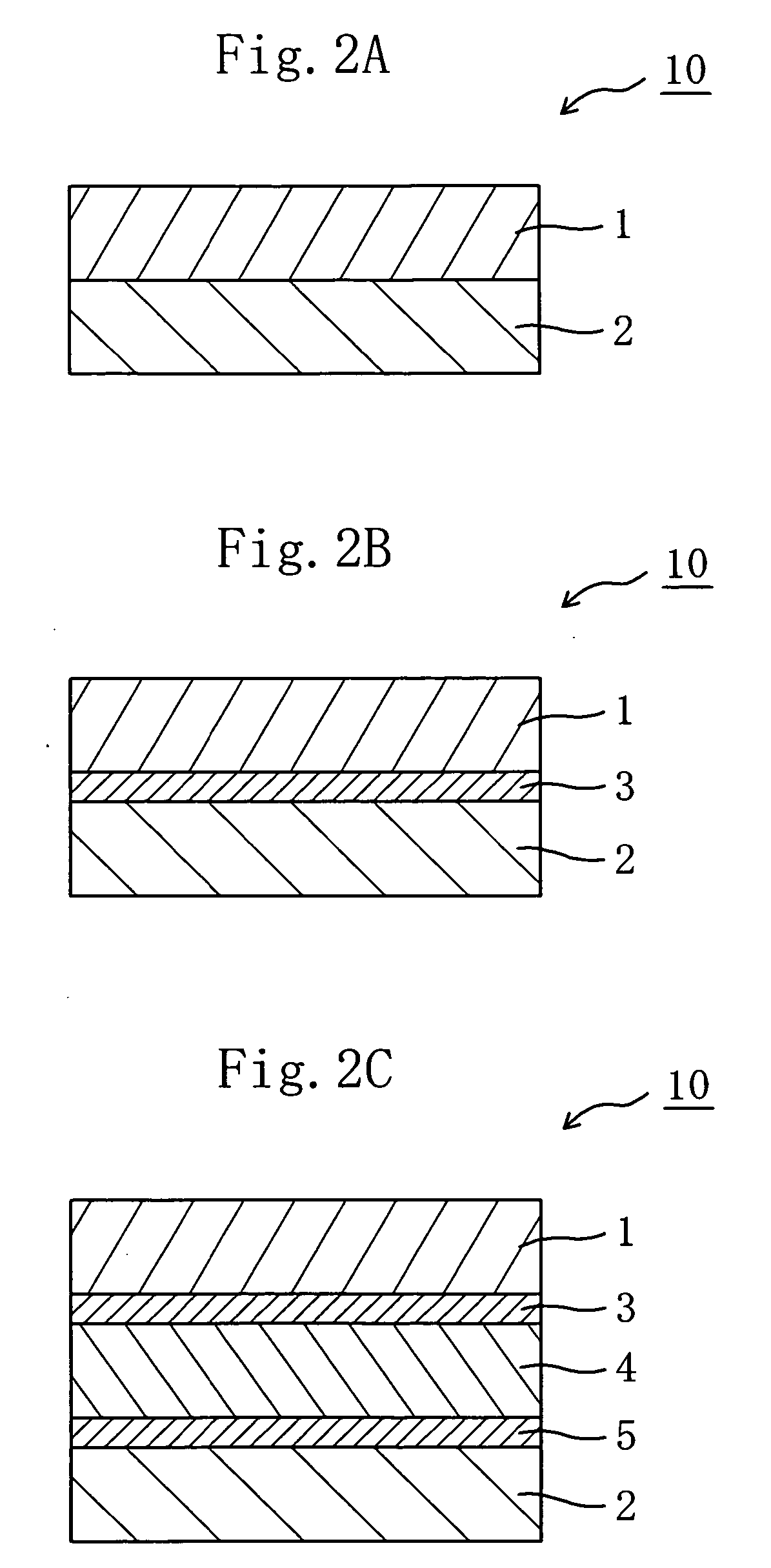Retardation film, polarizing element, liquid crystal panel, and liquid crystal apparatus
- Summary
- Abstract
- Description
- Claims
- Application Information
AI Technical Summary
Benefits of technology
Problems solved by technology
Method used
Image
Examples
reference example 1
Synthesis of Resin (i)
[0148] 5.0 g of a polyvinyl alcohol-based resin “NH-18” (trade name, available from Nippon Synthetic Chemical Industry Co., Ltd., degree of polymerization: 1,800, degree of saponification: 99.0%) was dried at 105° C. for 2 hours and dissolved in 95 ml of dimethylsulfoxide (DMSO). 3.78 g of 2,4,6-trimethylbenzaldehyde (mesitaldehyde), 1.81 g of propionaldehyde, and 1.77 g of p-toluenesulfonic acid monohydrate were added to the solution, and the whole was stirred at 40° C. for 4 hours. The obtained reaction product was added dropwise into a water / ethanol solution (2 / 1 in v / v) containing 2.35 g of sodium bicarbonate for reprecipitation. A polymer obtained through filtration was dissolved in tetra hydrofuran, and the solution was added dropwise into diethylether for reprecipitation. The polymer obtained through filtration was dried, to thereby obtain 7.89 g of white polymer. 1H-NMR measurement confirmed that the white polymer was a polyvinyl acetal-based resin hav...
reference example 2
Synthesis of Resin (ii)
[0149] 5.0 g of a polyvinyl alcohol-based resin “NH-18” (trade name, available from Nippon Synthetic Chemical Industry Co., Ltd., degree of polymerization: 1,800, degree of saponification: 99.0%) was dried at 105° C. for 2 hours and dissolved in 95 ml of dimethylsulfoxide (DMSO). 2.02 g of 2,4, 6-trimethylbenzaldehyde (mesitaldehyde) and 0.44 g of p-toluenesulfonic acid monohydrate were added to the solution, and the whole was stirred at 40° C. for 2 hours. 13.41 g of 1,1-diethoxyethane (acetal) was added thereto, and the whole was stirred at 40° C. for additional 2 hours. Then, 1.18 g of triethylamine was added thereto, to thereby complete the reaction. The obtained reaction product (polymer) was added dropwise into methanol for reprecipitation. After settling of the polymer, a supernatant was removed through decantation, and a methanol / water solution (1 / 1 in v / v) was added to the polymer, to thereby wash the polymer. The polymer obtained through filtration ...
reference example 3
Production of Polymer Film (i)
[0150] 17.7 parts by weight of the polyvinyl acetal-based resin (formula (V), l:m:n=21:58:21) obtained in Reference Example 2 was dissolved in 100 parts by weight of toluene, to thereby prepare a solution. The solution was applied uniformly onto a surface of a polyethylene terephthalate film “Lumirror S27-E” (trade name, available from Toray Industries, Inc., thickness of 75 μm) by using a comma coater. The whole was dried in a multi-chamber air-circulating drying oven (error of ±1° C.) with gradually increasing temperature from a low temperature of 80° C. for 20 min, 120° C. for 20 min, and 140° C. for 30 min, to thereby produce a polymer film having a thickness of 155 μm and a residual volatile content of 2% after drying. The polymer film had a transmittance of 90% and a water absorption of 3%.
PUM
| Property | Measurement | Unit |
|---|---|---|
| Temperature | aaaaa | aaaaa |
| Thickness | aaaaa | aaaaa |
| Thickness | aaaaa | aaaaa |
Abstract
Description
Claims
Application Information
 Login to View More
Login to View More - R&D
- Intellectual Property
- Life Sciences
- Materials
- Tech Scout
- Unparalleled Data Quality
- Higher Quality Content
- 60% Fewer Hallucinations
Browse by: Latest US Patents, China's latest patents, Technical Efficacy Thesaurus, Application Domain, Technology Topic, Popular Technical Reports.
© 2025 PatSnap. All rights reserved.Legal|Privacy policy|Modern Slavery Act Transparency Statement|Sitemap|About US| Contact US: help@patsnap.com



